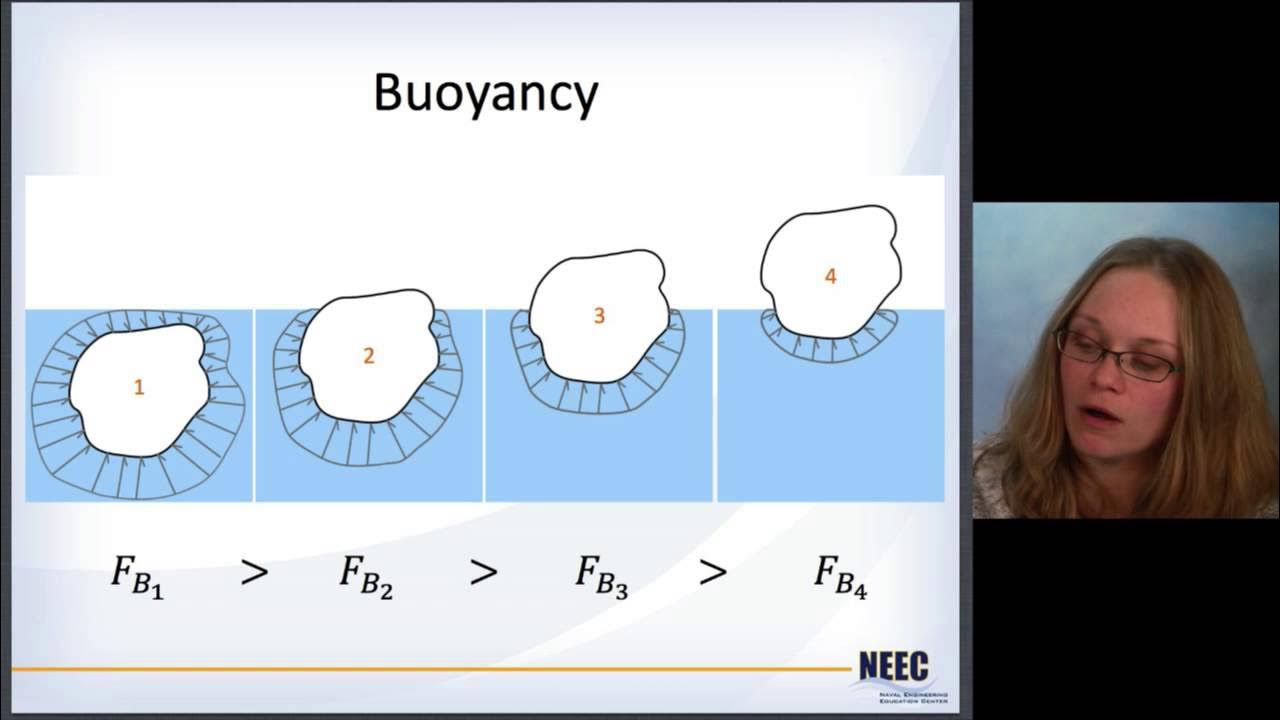4.4a Upthrust Buoyant Force (Archimedes Principle) | AS Pressure | Cambridge A Level Physics
Summary
TLDRThis video explores the concepts of buoyancy and up thrust in fluid dynamics, explaining how pressure differences create forces on submerged objects. The instructor walks through the derivation of the buoyant force equation, Archimedes' Principle, and the relationship between fluid pressure and the forces acting on objects in liquids. The buoyant force is shown to be equal to the weight of the displaced fluid, and practical examples help clarify how these principles apply to both fully and partially submerged objects. Key takeaway: buoyant force is critical for understanding flotation and sinking in fluids.
Takeaways
- 😀 Fluid pressure increases with depth, leading to a pressure difference between the top and bottom surfaces of a submerged object.
- 😀 The buoyant force (upthrust) is the net upward force exerted on an object submerged in a fluid, caused by this pressure difference.
- 😀 The force exerted by fluid pressure on an object acts in all directions, with greater force at greater depths.
- 😀 The buoyant force is determined by the formula F_B = ρ g V, where ρ is the fluid density, g is gravitational acceleration, and V is the displaced fluid volume.
- 😀 Archimedes' Principle states that the buoyant force is equal to the weight of the fluid displaced by the object, whether it is fully or partially submerged.
- 😀 Buoyant force is caused by the difference in fluid pressure on the top and bottom of an object submerged in a fluid.
- 😀 The pressure on the bottom surface of a submerged object is greater than the pressure on the top, leading to a net upward force.
- 😀 When calculating buoyant force, the atmospheric pressure cancels out, as it acts equally on both the top and bottom of the object.
- 😀 For an object fully submerged in a liquid, the buoyant force equals the weight of the liquid displaced by the object.
- 😀 If an object is partially submerged, the volume of fluid displaced corresponds to the submerged volume of the object, determining the buoyant force.
Q & A
What is buoyancy or up thrust?
-Buoyancy, or up thrust, is the upward force exerted on an object submerged in a fluid (liquid or gas) due to the pressure difference between the top and bottom of the object.
How does liquid pressure vary with depth?
-Liquid pressure increases with depth. The deeper you go in a fluid, the greater the pressure, as pressure is proportional to the height of the liquid column above the point of measurement.
What is the relationship between pressure and force in a fluid?
-Pressure in a fluid is defined as force per unit area. The force exerted by the fluid on an object is the pressure multiplied by the area of the object's surface.
Why is the buoyant force greater at the bottom of the submerged object?
-The buoyant force at the bottom of the submerged object is greater because the fluid pressure increases with depth. This creates a greater force on the bottom surface compared to the top.
How do you calculate the buoyant force?
-The buoyant force can be calculated using the formula: F_up = ρ g V, where ρ is the density of the fluid, g is the gravitational acceleration, and V is the volume of the fluid displaced by the object.
What is the formula for pressure in a fluid?
-The formula for fluid pressure is P = ρ g h, where P is the pressure, ρ is the fluid's density, g is the gravitational acceleration, and h is the height of the fluid column.
What is the principle behind Archimedes’ principle?
-Archimedes' principle states that the buoyant force on a submerged object is equal to the weight of the fluid displaced by the object. This force is responsible for the upward push on the object.
Why does a submerged object experience a net upward force?
-A submerged object experiences a net upward force because the pressure at the bottom of the object is higher than the pressure at the top, creating a difference in force that pushes the object upwards.
What is the role of atmospheric pressure in buoyancy?
-Atmospheric pressure affects the pressure at the top surface of an object submerged in a fluid. However, in calculations of buoyant force, atmospheric pressure cancels out because it acts equally on both the top and bottom surfaces.
Can the buoyant force be calculated for partially submerged objects?
-Yes, the buoyant force can be calculated for partially submerged objects by considering the volume of fluid displaced by the object, which depends on the submerged portion of the object.
Outlines

Этот раздел доступен только подписчикам платных тарифов. Пожалуйста, перейдите на платный тариф для доступа.
Перейти на платный тарифMindmap

Этот раздел доступен только подписчикам платных тарифов. Пожалуйста, перейдите на платный тариф для доступа.
Перейти на платный тарифKeywords

Этот раздел доступен только подписчикам платных тарифов. Пожалуйста, перейдите на платный тариф для доступа.
Перейти на платный тарифHighlights

Этот раздел доступен только подписчикам платных тарифов. Пожалуйста, перейдите на платный тариф для доступа.
Перейти на платный тарифTranscripts

Этот раздел доступен только подписчикам платных тарифов. Пожалуйста, перейдите на платный тариф для доступа.
Перейти на платный тариф5.0 / 5 (0 votes)






